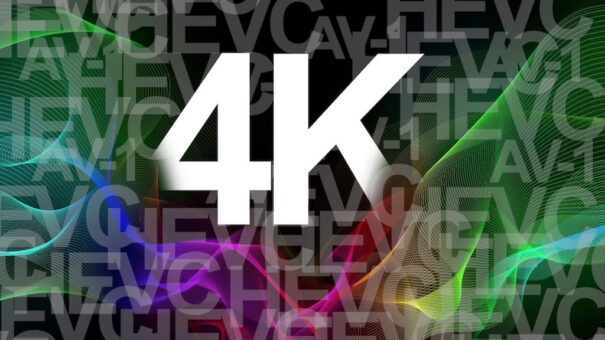UHD Spain analiza los principales retos del streaming en Ultra Alta Definición
En su cuarto encuentro virtual, restringido a miembros de la asociación, UHD Spain ha contado con la presencia de más de 40 asistentes que compartieron sus conocimientos sobre los principales retos del streaming en Ultra Alta Definición.
El encuentro, liderado por Sassan Pejhan, VP Emerging Technologies de Atem, planteó los flujos de trabajo para video bajo demanda y canales lineales, así como los principales retos de este estándar de resolución de imagen y el audio de última generación.
Xavier Redón, Product Manager de Cellnex, vicepresidente de UHD Spain y coordinador del grupo de trabajo de Emisión realizó una breve introducción de bienvenida al encuentro y dio paso directamente a Sassan Pejhan que, dentro una compacta y completa agenda de una hora de duración comenzó su masterclass exponiendo cuál era su definición sobre UHD.
“Desde mi propio punto de vista, ultra alta definición, también conocida como Ultra HD o UHD, es un estándar que se refiere específicamente a una resolución de imagen con más píxeles, mayor calidad de los mismos, una mejor optimización de marcos y, el gran olvidado, una mejor calidad del sonido, que incluye un sonido inmersivo, customizado e interactivo”, señaló.
Durante el encuentro Pejhan también expuso una evolución histórica de los códecs desarrollados para UHD desde mediados de los años 80 del pasado siglo, con los H.120, pasando por los MPEG, TrueMotion y VP, AV1, VVC y hasta llegar al códec H.265/High-Efficiency Video Compression (HEVC), uno de los grandes imprescindible desde hace unos años para ver contenido en 4K.
“Una tecnología de compresión de video que ofrece hasta un 50% de relaciones de compresión más altas que los estándares de compresión anteriores, aunque todavía no se ha podido resolver el problema del panorama fragmentado de patentes”, indicó Pejhan.
Actualmente el códec por excelencia es el HEVC, pero este estándar tiene un problema de raíz que está haciendo que muchas empresas apuesten por otras alternativas, y no es otro que las licencias. “El HEVC está dividido entre varios paquetes de licencias, lo que complica mucho la adopción por parte de los desarrolladores y empresas. Es aquí donde entra el MPEG-5 y el AV-1 con sus códigos abiertos”, explicó.
Lo sorprendente del nuevo MPEG-5 EVC, “es que ofrece la misma calidad que el actual códec HEVC, pero utilizando un bitrate medio mucho más bajo. Esto aporta un beneficio mucho más elevado cuando hablamos de que el ancho de banda en transmisiones se reduciría cuando la conexión a Internet está limitada”.
De momento AV-1 parece un fuerte competidor, ya que está recibiendo mucho apoyo desde Amazon, Apple, Facebook, Google, Intel, Microsoft, LG y Netflix. Una característica muy interesante sobre el códec AV-1 es la inclusión del procesado del efecto granular (film grain) para mantener la intención artística y reducir más el ancho de banda. Ateme lleva tiempo trabajando en esta funcionalidad y tiene hasta 5 patentes en este campo.
Pejhan también habló del nuevo códec VVC, que permite reducir el tamaño de los vídeos a la mitad de lo que ocupan ahora en H.265/HEVC.
Principales retos
Después de la explicación del directivo de ATeme sobre los diferentes códecs usados en la actualidad en UHD y los flujos de trabajo tanto en video bajo demanda como en canales lineales, Pejhan hizo una exposición de los principales retos a los que se enfrenta el UHD en la actualidad como es la mayor tasa de bits, las herramientas para reducir el impacto, la mayor demanda de recursos e impacto en la densidad de los equipo y la compatibilidad de dispositivos y finalizó su masterclass con una conclusión sobre dónde desplegar una plataforma streaming UHD, en cloud, on-prem o ambos.
Did you like this article?
Subscribe to our NEWSLETTER and you won't miss anything.



